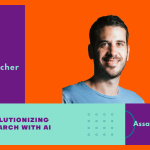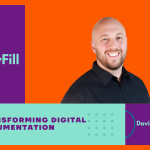In an era where customer support automation is essential for round-the-clock service, Enum emerges as a unique solution. Founded by Katherine, Enum offers an AI-powered chatbot plugin specifically designed for Crisp, a popular customer messaging platform. Enum’s integration not only enables businesses to maintain consistent customer engagement but also provides innovative features like multi-language support and media recognition, allowing companies to address customer needs efficiently. In this exclusive interview, Katherine shares the journey, technology, and vision behind Enum.
1. Could you introduce Enum and its primary functions? What specific needs in the tech support and customer service industries does it address?
Katherine Kleymenova: Enum is a SaaS tool that allows someone to load their data and get AI to answer them. The primary function, though, is that it’s a plugin for a chat tool called Crisp. So, if you have a website and some information is published on it, you want to make sure that your visitors find all the answers to their questions. If visitors don’t find them, they may go to a competitor. But for many businesses and organizations, it’s hard to have 24/7 support; this is why they would use the Enum plugin.
2. What inspired you to create Enum, and how did your journey in technology and customer interaction influence this product?
Katherine Kleymenova: About 7 years ago, I had a trivial question for my mobile provider that I couldn’t figure out on my own, and it turned out they had a wait line. I was in line for more than 6 hours and got my answer in a couple of minutes. I thought then that it would be great to create a tool to help with such questions. I even did some research, but it turned out my expertise was not enough at the time. Last year, when ChatGPT popped up, I remembered this old idea and decided to give it a try. What I didn’t realize was that everyone else had the same idea :)) but I wanted to make the product niche and create it as a plugin for Crisp. I had a lot of experience in developing SaaS apps, so developing the MVP took about 1.5 months.
3. Could you explain the step-by-step process of how Enum works, from data loading to connecting with the Crisp chatbot?
Katherine Kleymenova: It’s pretty straightforward. After registering in Enum, you create one or several data sources, which can be a website, PDF file, or just text. Meanwhile, in the Crisp dashboard, you install a plugin (done with just a click of a button), which generates some data in our system, links your project with the plugin, and creates a chatbot. That’s pretty much it—when someone asks a question in your chatbox, the chatbot will answer. You can change your chatbot’s properties, such as appearance, name, add a custom prompt, automate responses, integrate with other channels that Crisp supports (WhatsApp, Facebook, Instagram, and others), and set up a schedule for the chatbot. All of this allows you to create a flexible way to work with the chatbot side-by-side.

4. Enum offers a no-code solution for integrating with Crisp—how does this benefit founders who are short on time or resources?
Katherine Kleymenova: It’s a no-code solution that allows you to start quickly, with minimal or no knowledge of how chatbots work, and provides your website with an AI assistant that will help your users with your content and product.
5. How does Enum ensure data security and user privacy, especially with the vector database structure?
Katherine Kleymenova: We store all sensitive information, such as passwords, in encrypted form. Currently, we do not encrypt the information users pass to the chat, but we plan to do so in the near future. We are implementing all best practices to ensure the highest level of security at every stage of user interaction with our product.

6. What competitive advantages do you believe Enum has in the crowded chatbot integration space?
Katherine Kleymenova: Our product is developed specifically for integration with Crisp. With this focus, we offer the best set of features that other, more universal solutions can’t provide. These include integration with the Crisp bot, automation of the chatbot based on operator presence, customization, and AI features such as voice message and image recognition.
7. Are there particular industries or user groups where Enum has seen strong engagement?
Katherine Kleymenova: We don’t observe any single industry prevailing over others. The Enum chatbot is used across a wide range of industries, from educational products to large sports retailers and AI-generated tattoo services. Other popular industries include hosting providers, non-profit organizations, and construction. We also notice that many individuals use the chatbot on their websites to assist users when they are offline.
8. Could you share a bit about your background? How did earlier experiences influence your approach to building Enum?
Katherine Kleymenova: I’m a software developer with over 20 years of experience. I built my first SaaS application, a documentation service, back in 2006, but I failed because I didn’t believe in the product and was afraid to market it. Since then, I’ve tried to build SaaS applications multiple times and created several so-so products, but I have to admit that Enum has become my first success. Building a product is the easiest part; finding customers is the hardest part.
9. What were some of the challenges or turning points in your career that have shaped Enum’s current vision?
Katherine Kleymenova: I haven’t faced significant challenges except for creating awareness about my product. Nowadays, with so many chatbots and high keyword costs, it’s pretty hard to compete, but I hope that the fact my product is truly niche helps me to keep grinding and moving forward.
10. What new features or updates do you envision for Enum in the near future?
Katherine Kleymenova: We have a long list of requests from our users. Let me mention a few: our own API, which would allow using the chatbot outside the Crisp ecosystem; new data sources, such as CSV files, Notion, and Google Docs; training based on Crisp conversations (between users and agents); and many others.

11. How do you plan to keep Enum aligned with evolving customer needs, and are there any new tools or integrations you are excited about?
Katherine Kleymenova: Yes, for example, one of the features that will evolve is called Instruments. It allows the chatbot to call an API, read the response, pass the result to the chatbot, and form an answer based on this information. This is one of the features we want to develop extensively—the possibilities for the chatbot equipped with it are almost endless.
Conclusion
Katherine’s journey with Enum reflects her dedication to transforming customer support through innovative AI tools. With its unique focus on Crisp integration, multi-language support, and customizable features, Enum continues to gain traction across diverse industries. We at AIPressRoom are excited to share Katherine’s story and look forward to seeing Enum’s future advancements in the customer support landscape.



